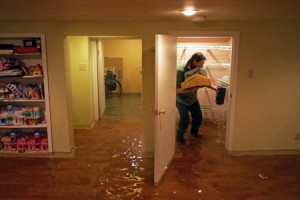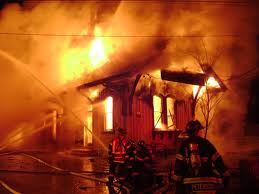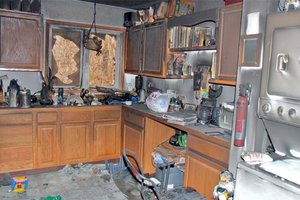McKinney Roofing – Wind Damage, Part 6
McKinney Roofing – Wind Damage, Part 6
by Kenton Shepard and Nick Gromicko
PERFORMING a WIND-DAMAGE INSPECTION
The inspection starts at the ground-level. As you inspect the home’s exterior, you’ll be looking for wind-caused collateral damage, including damage to the home’s elevation, which is everything you see when you stand back and look at the side of the home.
Collateral damage also includes items in the yard, such as lawn furniture.
ELEVATION DAMAGE
In looking for wind damage, watch for the following:
- If you find roofing materials on the ground, there’s a good chance that it came from the roof of the home you’re inspecting.
By looking at the pieces, you may be able to spot deficiencies before you go onto the roof.
Looking at this piece, you can see where it pulled over the head of a nail. Obviously, this shingle was not well-bonded.
You can see that this shingle was fastened with staples which pulled through, so this roof was also not well-bonded.
Looking closely, you can see that the staples were not installed correctly. The crowns should have been parallel to the long side of the shingle.
- Look for damage to siding and trim.
Siding can suffer both direct and indirect damage.
- Pay attention to the roof edges, especially near the corners. Loose drip edges may be more visible from the ground than from the roof.
- Try to determine the direction from which the wind has blown by looking at conditions visible from ground-level. This will help in locating both wind and hail damage.








